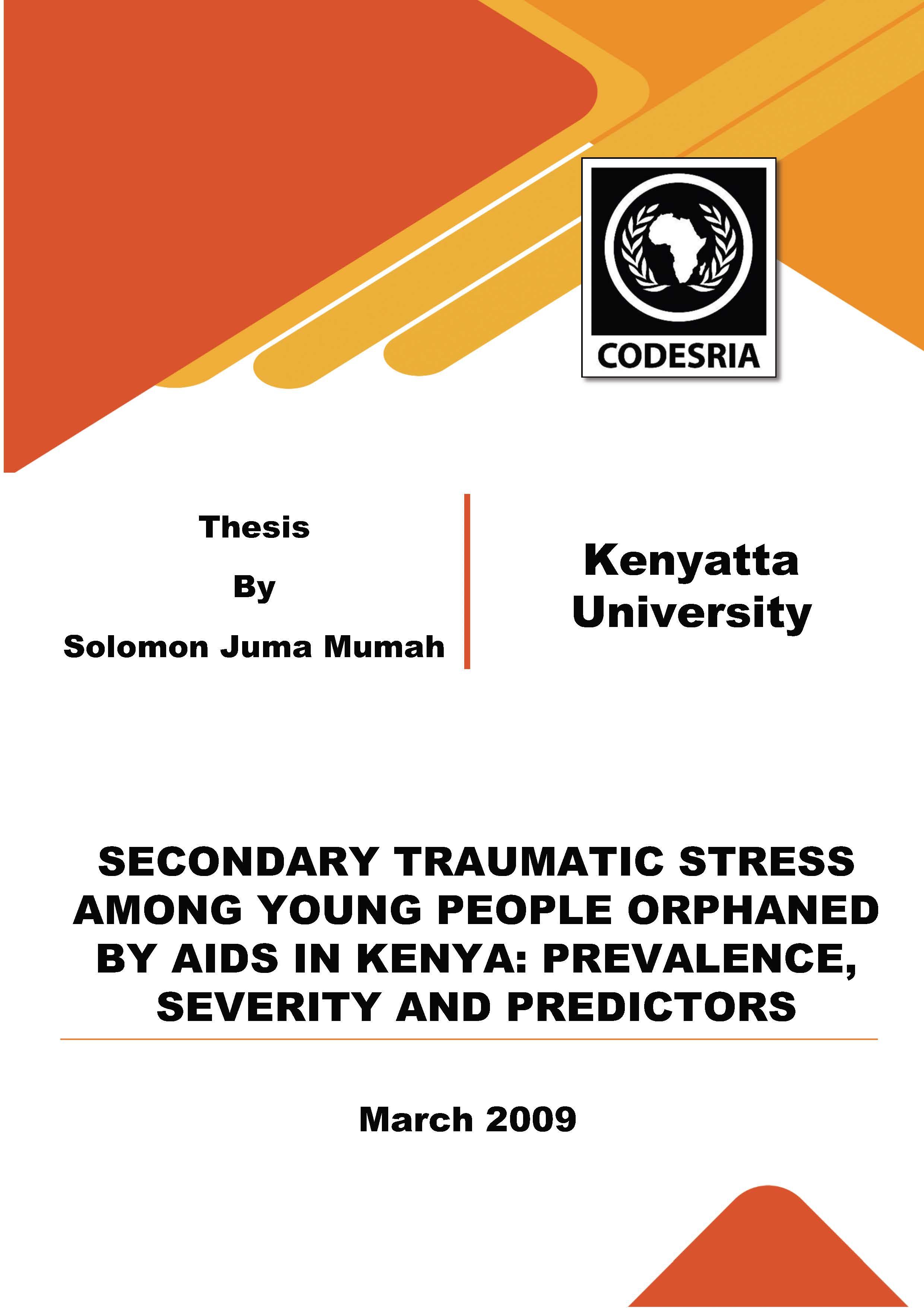SECONDARY TRAUMATIC STRESS AMONG YOUNG PEOPLE ORPHANED BY AIDS IN KENYA: PREVALENCE, SEVERITY AND PREDICTORS
Mots-clés :
Stress, young people, AIDS, KenyaSynopsis
Recent advances in Psychological research suggests that family, friends and professionals are susceptible to developing traumatic stress symptoms from being empathetically engaged with victims of traumatic events. The phenomenon of learning about another's traumatic ordeal, and in the process, experiencing traumatic stress is called Secondary Traumatic Stress (STS), and the condition of AIDS orphans is suspect to this. Many are dispossessed of their parents' property and must contend not only with the normal stress, dissatisfaction or work, but also with the emotional and personal feelings for their parent(s) and suffering sibling(s). This study assessed prevalence and extent of severity of STS among young people orphaned by AIDS, thereby identifying factors that predispose them to STS. Some 309 orphans from Rachuonyo District in Kenya participated in the study. The single cross-sectional survey adopted the questionnaire as the main tool for primary data collection. Quantitative data were collected using the STS test at three levels: burnout (BO), compassion satisfaction (CS) and compassion fatigue (CF). These were analyzed quaqtitatively. Based on results, orphans exhibited at least 17 of the 30 symptomatologies of STS investigated at a level that is comparable to people who would seek treatment for those symptoms. On the overall, more males (57.7%) than females (42.3%) exhibited symptoms of STS. The respondents also reported experiencing moderate levels of risk for BO (mean=25.6616), high levels of potential for CS (mean=27.7374), and high levels of risk for CF (mean=29.940). Greatest risk for STS was associated with BO and CF whereas the least risk for STS was associated with CS. Average scores of the participants were significantly higher on all the three sub-scales while the observed differences were statistically significant at o. = 0.01 (2-tailed); and at o. = 0.05 (2-tailed) (p<0.001). Regarding the relationship between STS symptoms and the development of STS, the study established that CF was more strongly correlated to STS (correlation=0.875; p<0.001) [o. = 0.01 (2-tailed); and at o.=0.05 (2-tailed)] than BO, which was more strongly correlated to STS (correlation=0.633; p<0.001) than CS
(correlation=-0.148; p<0.05). Further relationships were established between STS and sex of the respondents (F=4.947; p= 0.027), level of formal education attained (F=3.013; p=0.034), number of years of paternal orphanhood (F=4.812; p=0.003), number of hours· per day spent in caregiving (F=9.827; p= 0.000), person(s) to whom such care was rendered (F=9.202; p=0.000)
and the involvement with household chores (F=3.348; p=0.021). The major predictors of STS were established, thus: sex (t=-2.083; p=0.045), level of formal education attained (t=-2.019; p=0.051) and number of years of paternal (t=2.199; p=0.035) and maternal (t=2.702; p=0.011) orphanhood. Thus, there is need for additional studies about the process of how some orphans
develop STS symptoms while others appear not to be in distress. Research on emotional expression will offer important conceptual understandings by providing evidence to support the deleterious effect that orphanhood-realted emotions have on overall well-being of AIDS orphans. Research to help develop theory related to STS will be worthwhile in addition to a longitudinal study to help clarify the cumulative effects of STS.
Téléchargements






